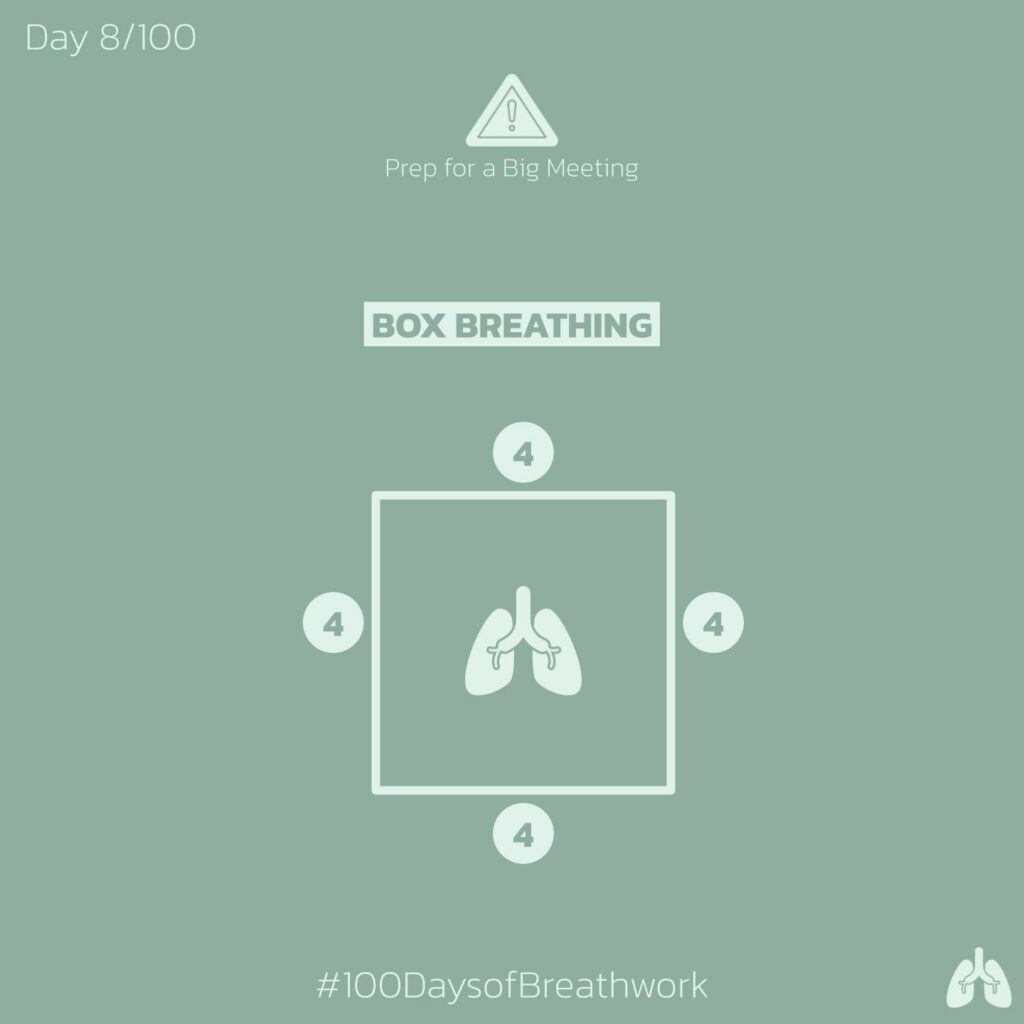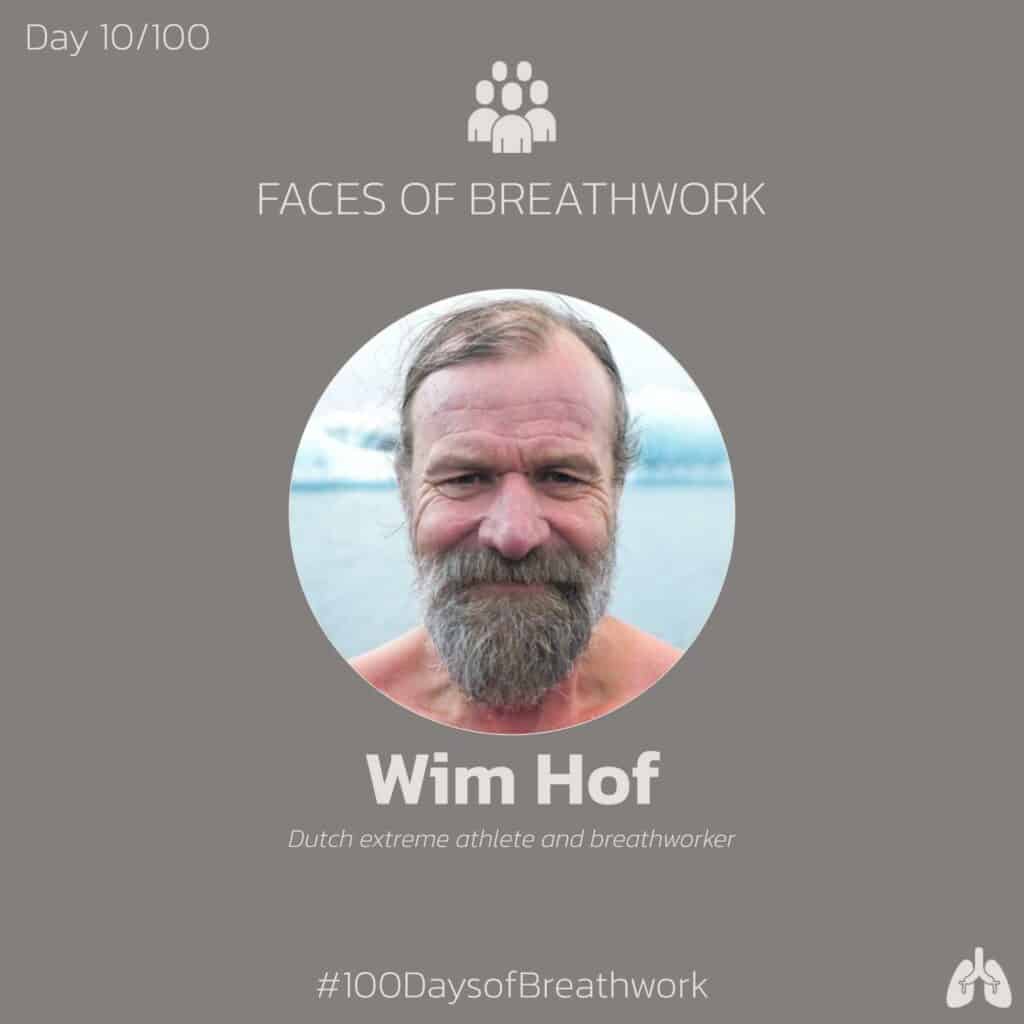100 Days of Breathwork W2
Last week, we talked about what Breathwork is exactly and where it came from. We also got to know BKS Iyengar, one of the prominent figures of Breathwork. This week we get to learn about another popular breathing exercise and the founder of one of the most well-known (and growing) breathwork methods in the world.
Day 7: History of Breathwork
What is Tummo breathing and meditation?
Tummo breathing translates to “inner fire” and is an ancient breathwork technique originally practiced by Tibetan Buddhist monks. There are two ways to practice Tummo: with both having a visualization of a flame inside your body, whereas the breathing pattern is different between the two methods.
The first Tummo technique has a breathing pattern that is actually similar to Wim Hof Method, in that you take multiple deep inhales for a brief period of time and hold for as long as you can. Release and begin again, repeating this 3-4 times (as you feel comfortable).
For the second type of Tummo, you inhale deeply through your nose and exhale through your mouth as if blowing through a straw. After 5x, inhale deeply, swallow, and press down on your diaphragm / bottom of your belly. Simultaneously, as you press down with your belly, pull up using your PC muscles (the one you use to stop a stream of urine). And hold for as long as you can, creating that up/down pressure, and visualize the fire building in your belly. Repeat this 3-4 times as you feel is necessary.
No matter with approach to Tummo you take, during the breathing and retention, you visualize an inner fire being stoked by the oxygen you are pulling in during each breath. This can be a flame going up your spine or a flame burning in your belly. The focus should be on building the flame and feeling its internal heat.
Historically, Tibetan monks have actually been known to be able to raise their body temperature by seven degrees by practicing this method It is possible that this is why Wim Hof adopted a similar style of breathwork, given the cold exposure component of the Wim Hof Method.
The main differences between Tummo and Wim Hof are:
- Unlike Tummo, historically practiced by Tibetan monks as a spiritual practice, the Wim Hof Method does not have roots in religion Instead, its roots are based in nature and facing extreme elements (like the cold)
- The Wim Hof Method does not have a visualization component like Tummo’s ‘inner fire’ visualization.
Note: as with any breathwork practice, you should not perform while in or near water, pregnant, or epileptic.

Day 9: Science Behind Breathwork
Oxygen and CO2 levels during breathwork
During Breathing
Our blood is usually saturated with oxygen (-99%), and the deep breathing part of breathwork doesn’t change it much.
However, during many types of deep breathwork, like the Wim Hof Method, we lower CO2 levels in our blood. As discussed last week, this increases our pH level, making it less acidic.
Our red blood cells, the ones that carry oxygen around our body, require some acidity to release oxygen to our muscles and tissues. Because they’re clinging to the oxygen, we are inducing short-term hypoxia, a term defined as a deficiency in oxygen reaching tissues. This happens even though oxygen levels remain saturated at about 99%.
Don’t worry though, when we take our last breath of deep breathing, the acidity level will return to normal.
During Retention
During retention (i.e. breath-hold), things get interesting.
It’s a common misconception that ‘running out of oxygen’ gives us the urge to breathe, but it is actually the growing level of CO2 that does. The brainstem, which is responsible for much of our autonomic functions like breathing, is sensitive to carbon dioxide. Having too much CO2 in the blood will trigger our brain stem to force us to breathe. By removing CO2 from the blood through deep breathing, our brainstem’s impulse to breathe is lowered.
Because our CO2 levels are so low when we begin the hold, our brainstem is far from sensing the need to breathe. Simultaneously, oxygen saturation levels start to fall to the point that cells aren’t getting a ‘normal’ amount of oxygen.
This is now our second time experiencing hypoxia, and our cells’ metabolism begins to shift.
This hypoxic state will signal the body to react and strengthen. The body’s sympathetic response is activated and the ways we deliver oxygen to cells are strengthened. This includes a number of different systems, such as increasing red blood cells, increasing lung capacity, improved circulation, and improved metabolic efficiency over the long term.
This period of hypoxia is a great example of a hormetic stressor – something in the short term that signals the body to react and strengthen to better deal with stress in the long term.

Day 10: Faces of Breathwork
Wim Hof
Our featured ‘Face of Breathwork’ today is someone leading the charge in the re-emergence of breathwork.
Meet, Wim Hof.
Wim is the passionate person and incredible human behind the ever-growing Wim Hof Method, which includes breathwork (as well as cold training and mindset/commitment).
Wim Hof’s path toward breathwork was not one entrenched in institutional study and learning. Instead, it was a result of tragedy and, as he calls it, his greatest teacher: the cold.
Wim had been going into cold water since he was 17 years old. Soon after the tragic death of his wife, he ramped up this routine Using ‘cold, hard nature,’ as a coach, his training ‘Fabled him to learn to control his breathing, heart rate, and blood circulation. He says this developed into a breathing technique that has since taken hold in modern fitness.
The Dutch extreme athlete has put his teachings to the test, resulting in a number of world records. These include: climbing Mount Kilimanjaro in shorts, running a half marathon above the Arctic Circle barefoot, and standing on ice for 112 minutes. Wim has now made it his mission to share his method and its benefits with the rest of the world.
Day 11: Live Breathwork Session
We held a live breathwork session on Monday, March 7 at 7:15 am ET on LinkedIn Live. This is not a permanent session called Monday Morning Breathwork, hosted by Recal and our founder, Anthony Lorubbio. You can view the link to the recording of the breathwork here and scroll down to Day 11.
Day 12: What are the Benefits of Breathwork?
What are the physical benefits of breathwork?
Last week we discussed the mental benefits of breathwork; now let’s talk about the physical benefits.
Breathwork is an exercise for our diaphragm muscle and a way to increase lung capacity, which is directly tied to health and longevity.
Breathwork alkalizes the blood, acting as a quick ‘dean-up’ of acids before recalibrating back to a base pH of 7.4.
In studies, it’s been proven that Wim Hof’s style of breathwork has lowered inflammation, both acute (infection, sickness, etc.) as well as chronic (like axial spondyloarthritis in this proof of concept study) types.
Breathwork produces adrenaline, resulting in a temporary increase in endurance and focus.
Lastly, the temporary hypoxic state during the retention of breathwork is a hormetic stressor, signaling the body to react and strengthen. •7- (need a refresher on hypoxia? See Day 9)
The body’s sympathetic response is activated and the ways we deliver oxygen to cells are strengthened. This is done in a number of different ways, such as increased red blood cells, increased lung capacity, improved circulation, and improved metabolic efficiency as a result of temporary hypoxia.
Conclusion
The modern incarnation of breathwork draws from many sources throughout history. From ancient practices to military methods to modern-day mindfulness. This is a testament to the effectiveness of proper breathing techniques to enhance focus, clarity, and overall health and well-being.
